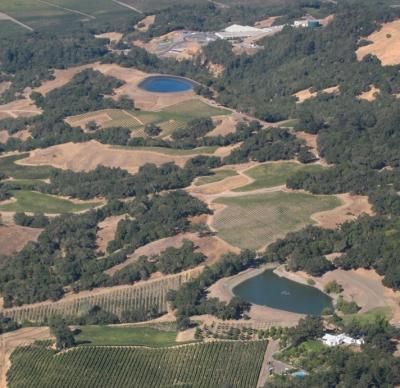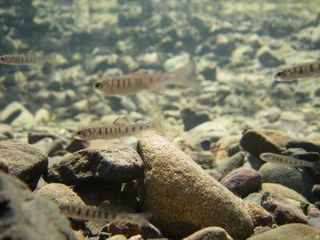Trout and Vineyards Compete for Water in Wine Country

California's vineyards are stealing water from the fishes in nearby rivers, a new study suggests, and the competition between farmers and fish for water is intensifying.
"Nearly all of California's salmon and trout populations are on the path to extinction and if we're going to bring these fish back to healthy levels, we have to change the way we manage our water," study researcher Theodore Grantham, of the University of California, Davis, said in a statement. "Water withdrawals for agricultural uses can reduce or eliminate the limited amount of habitat available to sustain these cold-water fish through the summer."
The findings, published today in the May issue of the journal Transactions of the American Fisheries Society, link higher death rates for threatened juvenile steelhead trout with low water levels in the summer and the amount of vineyard acreage upstream.
"I don't suggest we get rid of vineyards, but we do need to focus our attention on water management strategies that reduce summer water use," Grantham said. "I believe we can protect flows for fish and still have our glass of wine."

Steelhead trout (Oncorhynchus mykiss), historically found throughout the North Pacific Ocean, are an ocean-going rainbow trout. Like salmon, steelhead trout migrate from freshwater streams to the ocean before returning to their birthplace to breed. Steelhead trout in Southern California are endangered, and in Northern California they are threatened.
Analysis is of 9 years of fish count data taken from 9 streams in Sonoma County, allowed researchers to account for year-to-year variability in precipitation and differences in land use. The researchers found that juvenile steelhead trout are particularly at risk during the dry summer seasons and in areas with high numbers of vineyards.
Of the juvenile steelhead trout present in June, on average only 30 percent survived to the late summer. In years with higher rainfall and in watersheds with less vineyard land use, the survival was significantly higher.
Sign up for the Live Science daily newsletter now
Get the world’s most fascinating discoveries delivered straight to your inbox.
While drought conditions clearly have an impact on water levels in streams, the study authors highlighted the role played by regional agriculture. Previous studies in Sonoma County have shown that stream flow drops when pumps draw water for vineyards.
One possible solution, Grantham noted, is establishing small off-stream reservoirs to store water during times of high rainfall. Vineyards would be able to draw from these water stores during low-flow periods rather than directly from streams.












